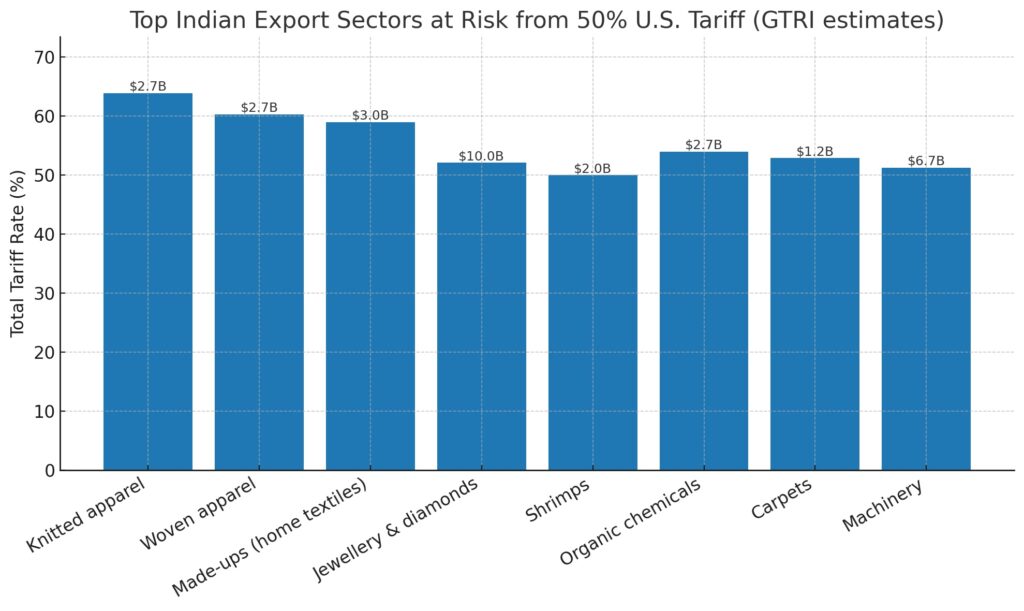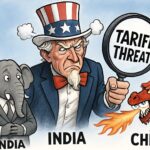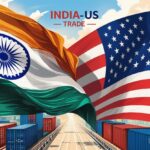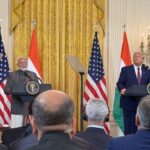Prime Minister Narendra Modi’s possible meeting with U.S. President Donald Trump on the sidelines of next month’s United Nations General Assembly is shaping up less as ceremonial diplomacy and more as a high-stakes trade confrontation, with Washington’s newly doubled tariffs on Indian exports threatening to turn friendly optics into tense bargaining.
The U.S. decision to raise duties on Indian goods to 50 per cent —ostensibly over New Delhi’s continued purchase of Russian oil—places India among America’s most heavily taxed trade partners, on par with Brazil and well above China’s 30 per cent rate. The contrast is politically loaded: Beijing imports far more Russian oil than India yet faces a lighter penalty, shielded by U.S. dependence on Chinese critical minerals and manufacturing supply chains.
Tariffs as Negotiating Weapon
The tariff hikes, effective August 27, target India’s most competitive export sectors—textiles, carpets, shrimps, machinery, and gems—threatening losses of 50–70 per cent in some categories, according to the Global Trade Research Initiative (GTRI). Exemptions for pharmaceuticals, smartphones, and petroleum products reveal a calculated U.S. strategy: spare what Washington needs, squeeze where India is vulnerable.
“This is pressure, pure and simple,” said a New Delhi trade analyst. “The U.S. won’t risk a fight with China, so it’s making India the proving ground for its tough-on-trade rhetoric.”

The damage is not only economic. By making India the example, the Trump administration is signaling to domestic voters that it can enforce trade discipline abroad—without confronting a strategic rival.
Political Overhang and the Risk of Misrepresentation
The meeting—if confirmed—would take place amid a stalled trade agreement. Indian officials say most terms were agreed before Washington moved the goalposts, demanding greater access to India’s agriculture, dairy, and procurement markets, alongside tighter digital trade rules. That push, negotiators argue, tilted the deal from mutual benefit to “one side gives, the other takes.”
The pattern is not without precedent. In recent weeks, Trump announced sweeping trade wins with Indonesia and Vietnam—deals concluded not by negotiators but in personal phone calls with leaders, bypassing formal texts. In both cases, discrepancies quickly emerged between Trump’s public claims and what the partner countries say they agreed to, creating uncertainty over whether binding agreements even exist.
Analysts warn India could face similar risks. “If the U.S. President calls Modi, declares victory, and India doesn’t immediately deny it, the optics could lock New Delhi into a one-sided arrangement,” GTRI’s Ajay Srivastava cautioned. “India must insist on written, jointly signed terms before acknowledging any deal.”
Asymmetry With China
The uneven treatment compared to China is hard to ignore. Washington recently extended a three-month tariff truce with Beijing and continues to allow exports of sensitive semiconductor technology from U.S. firms such as NVIDIA. Chinese goods face a 30 per cent U.S. tariff—half India’s rate—despite China being the largest buyer of Russian oil.
The calculation is blunt: China can retaliate by cutting off critical mineral supplies vital to U.S. defense and high-tech manufacturing; India cannot. The result is a geopolitical double standard dressed as trade enforcement.
What’s at Stake in New York
If Modi attends the UNGA—slated to speak September 26, three days after Trump—any bilateral could be the most consequential for India’s trade policy this year. Beyond tariffs, Washington is pushing demands that cut into India’s policy red lines: agriculture protection, generic drug exports, digital sovereignty, and public procurement rules.
The risk for Modi is dual: appear weak under U.S. pressure or be cast as obstructing a deal that Trump can sell to his electorate. With both leaders heading into politically sensitive periods, the choreography in New York will matter as much as the content.
The lesson from Jakarta and Hanoi is clear—India must guard against handshake diplomacy morphing into political theatre at its expense. In a trade environment where perception can outrun reality, one unwritten concession could cost more than years of careful negotiation.


![tariff_vs_exports_side_by_side[1]](https://southasianherald.com/wp-content/uploads/2025/08/tariff_vs_exports_side_by_side1-1170x697.jpg)



